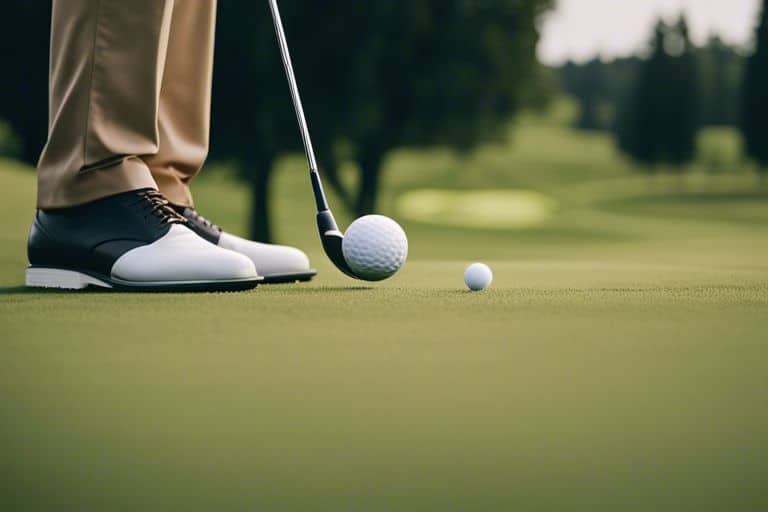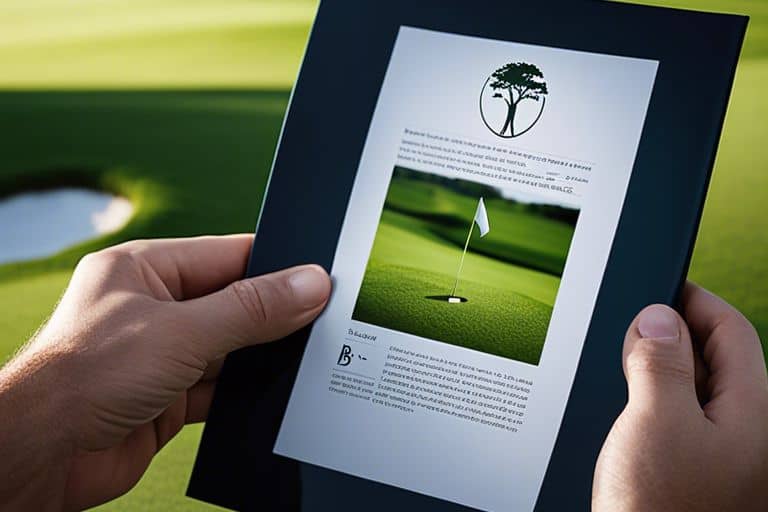What does it mean to "duck hook" a shot in golf?
Permit me to explain what it actually implies to “duck hook” a shot in golf. When I hit the ball with an off-center clubface, the result is a violent and uncontrollable spin that sends the ball curving sharply to the left for a right-handed golfer, or to the right for a left-handed golfer. This erratic and hard-to-control trajectory is the bane of many golfers, often leading to lost balls and high scores on the course.
The Duck Hook Explained
For those new to the game of golf, the term “duck hook” can be quite intimidating. However, once you understand what it means and why it happens, you can begin to address the issue in your game. In this chapter, I will explain what a duck hook is, its definition in golf, and the common causes behind this frustrating shot.
Definition of a Duck Hook in Golf
A duck hook in golf refers to a ball that curves sharply from right-to-left for right-handed golfers (left-to-right for left-handed golfers). The ball typically starts straight or slightly right of the target line, then curves hard to the left (or right for left-handed golfers). This can result in the ball ending up in the rough or even out-of-bounds, making it a frustrating and potentially costly shot.
Causes of a Duck Hook
There are several potential causes behind a duck hook in golf. One common culprit is an overactive upper body during the downswing, which can result in the clubface closing too quickly through impact.
Another cause could be an outside-in swing path, which can lead to the club coming across the ball from right-to-left, promoting the leftward curve. Lastly, a grip that is too strong (or rotated too far to the right) can also contribute to a duck hook, as it encourages the clubface to close excessively at impact.
I hope this information helps you to better understand what it means to “duck hook” a shot in golf.

Technical Aspects of Duck Hooking
Obviously, a duck hook is one of the most frustrating shots in golf, and understanding the technical aspects of how it happens can help you correct it. There are several key factors that contribute to the duck hook, including golf stance and grip as well as swing path and clubface orientation.
Golf Stance and Grip Factors
When it comes to the golf stance and grip, alignment, posture, and grip pressure are crucial in avoiding a duck hook. Your stance should be square and not excessively closed or open, while the grip pressure should be firm but not too tight, with both hands working together in unison. Your grip should also be neutral, with neither hand dominating the other on the club. Perceiving a strong grip and a closed stance can lead to a more closed clubface at impact, contributing to the duck hook.
Swing Path and Clubface Orientation
Another crucial aspect of duck hooking is the swing path and clubface orientation. One of the most dangerous tendencies is an in-to-out swing path combined with an excessively closed clubface at impact. This combination can result in a severe duck hook. Ensuring a square clubface at impact and a swing path that is more neutral can help prevent the duck hook from occurring.

How to Avoid Duck Hooking
Lastly, let’s talk about how to avoid duck hooking your golf shots. It can be frustrating to consistently struggle with this issue, but there are some steps you can take to improve your swing and minimize the likelihood of duck hooking.
Tips for Correcting Your Stance and Grip
If you find yourself frequently duck hooking, one of the first things to check is your stance and grip. I recommend taking a close look at the positioning of your feet and the grip you have on the club. Your stance should be shoulder-width apart, and your grip should be firm but not too tight. Make sure that your grip is neutral, not too strong or too weak. After making these adjustments, you may find that your shots start to straighten out.
- Check your stance – make sure your feet are shoulder-width apart
- Adjust your grip – ensure it is firm but not too tight, and neutral
- Practice your stance and grip on the driving range to build muscle memory
After making these adjustments, you may find that your shots start to straighten out. Remember, a correct stance and grip are crucial for delivering the clubface square to the ball at impact, reducing the chances of a duck hook.
Adjusting Swing Mechanics and Follow-Through
Another key area to focus on is your swing mechanics and follow-through. Pay attention to your swing plane and the path of your club as you swing through the ball. A steep or too inside-out swing path can often lead to a duck hook. Additionally, make sure to complete your swing with a full follow-through. Many golfers who struggle with duck hooking tend to stop their swing abruptly, which can exacerbate the issue.

Corrective Drills and Practice Routines
Your ability to correct a duck hook in your golf game depends on your commitment to practice and refine key aspects of your swing. Below, I will outline some drills and practice routines that can help you improve your swing path and clubface control, which are crucial in preventing the dreaded duck hook.
Drills to Improve Swing Path
One effective drill to improve your swing path is the alignment stick drill. To do this, place an alignment stick in the ground so that it is perpendicular to your target line, and parallel to your stance line. When you swing, make sure that your clubhead travels parallel to the stick on the downswing, and through impact. This will help you to develop a more desirable inside-out swing path, which can prevent the duck hook.
Practice Routines for Clubface Control
When it comes to clubface control, a great practice routine to adopt is hitting half shots with a focus on face angle. Start by hitting a series of half shots with a short iron, with the goal of keeping the clubface square through impact. Gradually increase the length of your swings while maintaining the same focus on clubface control. This routine will help you develop a better feel for the clubface and ultimately reduce the likelihood of a duck hook.
Conclusion
Ultimately, understanding what it means to “duck hook” a shot in golf is crucial for any player looking to improve their game. By recognizing the causes and effects of a duck hook, you can better diagnose and correct your swing to consistently hit the ball straight and true. Remember to focus on your grip, clubface alignment, and swing path to minimize the risk of duck hooking your shots. With practice and attention to these key factors, you can improve your accuracy and precision on the golf course.






